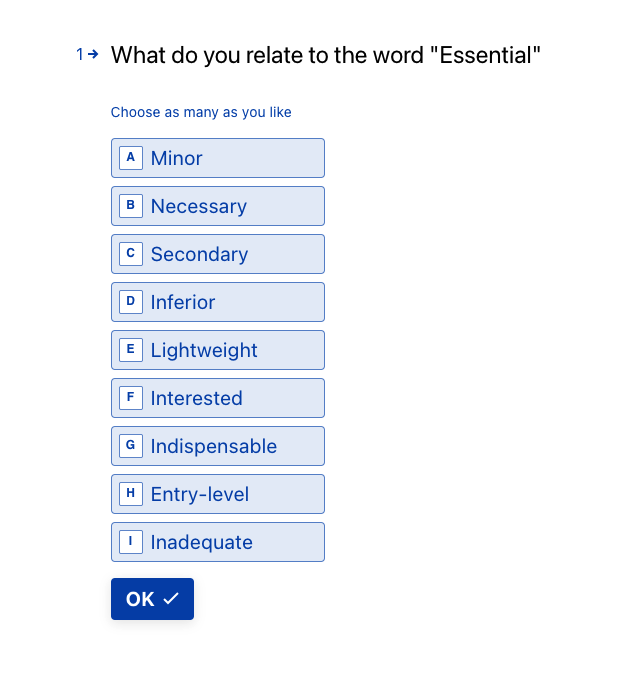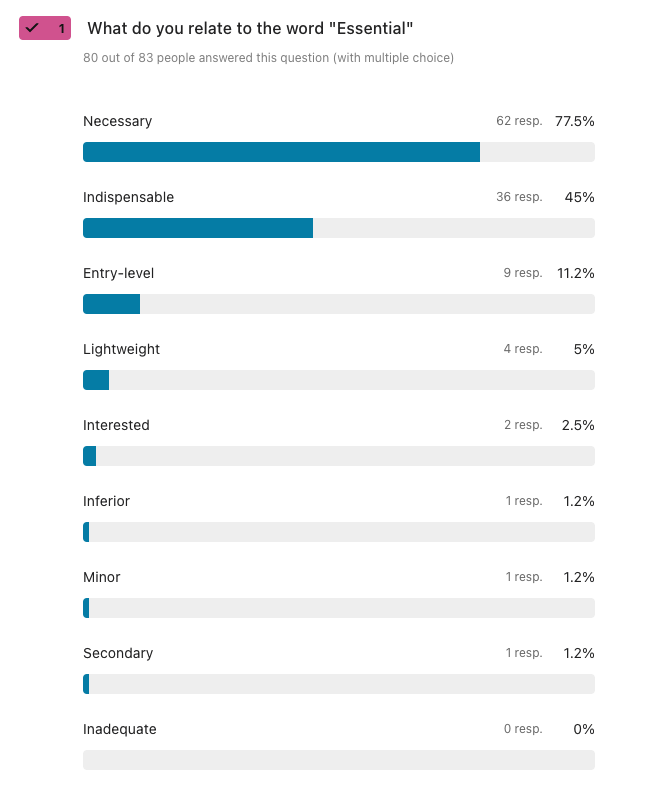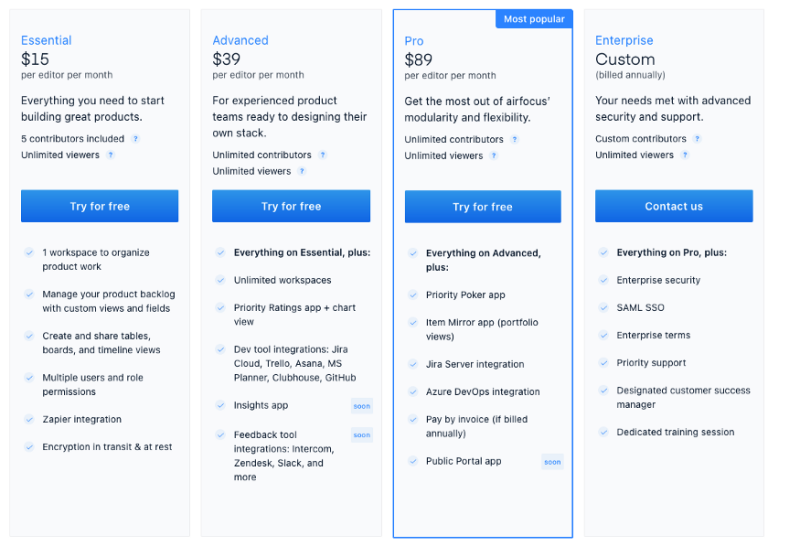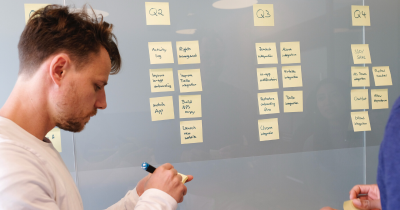How To Use Discovery To Define Pricing Packages for a SAAS Product

Before I start I have to be honest about this — I did a lot of research and I wasn’t able to find anything out there around how to name pricing packages in a product.
There are a lot of useful examples out there as to how to price products, from using different strategies to even how to place them on a page, but there was very little around naming.
If you’re out there struggling with this too, I hope you find this helpful!
Why Naming Your Packages is Important
How you place pricing packages on a pace has a psychological effect. It turns out, you can actually drive the user to select the ‘middle tier’ package by adding packages around it that almost make no sense. It’s called anchor-pricing.
Essentially, you anchor your desired price around two other prices (one low and one high) to make it seem more attainable.
I’m not going to go too deep into how to do the actual pricing itself, but if you’re curious, the crew at Sumo has a great blog on this.
The important bit here: if how you layout items on a page is important, isn’t naming of those items also important? Absolutely.
Your names need to be deliberate and needs to help the customer understand what they get out of that particular package.
This is where aspirational names and descriptions come into place.
For example:
Naming a package “Premium” already gives the impression something is going to cost a lot of money. How might we help the user still purchase that package, without making them feel like they’re spending?
And this is exactly the conundrum I was facing.
Our Pricing Hypothesis
As any good product team would do, we started with a hypothesis:
By giving our pricing packages attainable, attractive, and outcome-based names, we can drive customers to select the package that is right for them without making them feel like they’re spending money, but investing money.
After all, any tool is an investment, right?
Discovery Kick-Off
We of course had to start with some assumptions. Our current situation was that we had 5 pricing packages (yeah, let’s talk about that later!) — and we needed to add a little focus both for ourselves but also potential customers.
Slash “Starter”
No one wants to feel like they’re just a starter. Also, most “starter” plans suck. You get nothing out of them, and the jump from the starter plan to any plan that provides value is so steep, customers are likely to not convert.
Out the door you go!
Play the Word Game
As I said, we had a few assumptions as to what we thought the names should be, but without any proper research, it’s all just a guessing game.
We decided to start a typeform and ask people what they related our potential plan names to.
We knew that the “Starter” plan had to go, but we weren’t quite sure what to replace it with. Two ideas we had were “Lite” and “Essential.”
In order to understand a bit more about whether or not we were heading in the right direction, we ran a survey and asked people what they connected the word “Essential” to.

What we are looking to understand here: is Essential the same as an entry-point plan, or do people perceive the word as being something that is inferior to anything else presented?
The result: most people perceived the “Essential” name as being a plan that is indispensable, entry-level and light weight, but certainly not inferior in any way.

We ran the same exercise with a few more words, including Advanced, Plus, Pro, Premium, and Enhanced.
This discovery took 72 hours, and we walked away knowing more than what we did when we started.
Invalidating Your Assumptions
When running discovery, the most important part of it is to approach it without any personal feelings, because fact is you may be proven wrong.
This is actually what you want!
If you’re constantly proven right about your assumptions, question if you’re adding bias into your discovery and results.
When we started this exercise, we all had assumptions about which plans we thought would rank better, and for the most part we were wrong.
From a sales team perspective, some wanted “Premium.” Why? Because that sounds like money, and a sales team likes money! However, customers do not like spending it, so it was quickly scratched.
From a product marketing experience, I thought “Enhanced” seemed like a package that offered more than “Advanced” — but I was wrong. Turns out, most people perceived “Enhanced” as just a touch above “Essential.”
From a product perspective, “Plus” seemed like a good option, but would you really say “I am a Plus customer?” How does that make you feel?
Here’s our final round up:
Essential
Advanced
Pro
Enterprise
These allow us to give customers and aspirational and achievable place to be, while not making them feel like they’re less if they don’t go for a different package.

We still have a startup package, designed specifically for pre-seed companies that are only just beginning and need a place to organize their product work. This 5th package requires vetting, and while still available to the public, doesn’t distract from the four core packages we offer.
Lessons Learned
So quick TLDR if you’ve skimmed through this:
Naming your packages is just as important as how you price them.
Ask questions — you will learn so much from talking to people!
Discovery doesn’t need to take months and months of work, you can do quick surveys to gain some initial learnings.
Knowing something is better than knowing nothing. Knowing something gives you a more positive place to start testing things, learning, and iterating properly.

Andrea Saez

Read also

Create effective product strategy

Experience the new way of doing product management







